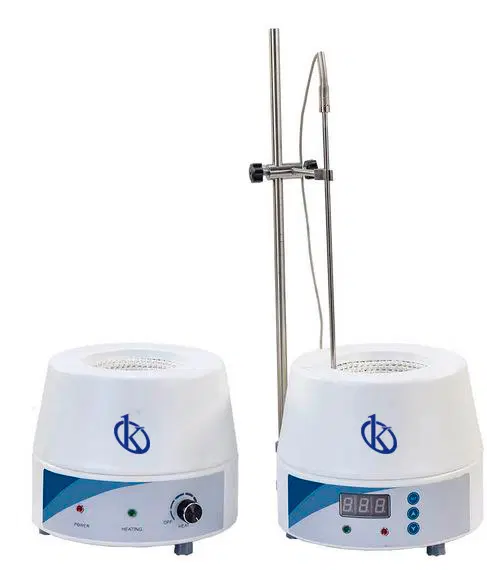Heating mantles have increasingly become everyday items in many laboratories due to the numerous benefits they offer. A heating mantle is a type of equipment used to heat a vessel. These are generally composed of a metal foil, a strong thermal insulator, an adjustable thermostat and an adhesive tape for easy installation.
Heating mantles have proven to be an extremely useful tool in the laboratory environment. This is because they provide homogeneous and direct heating that avoids wasting time, safety and energy. Their use has become widespread in all types of scientific processes, from fermentation to the polymerization reaction.
Scientific advantages in the use of Mantle Heaters
Another major advantage of heating mantles is that they can be customized to fit the exact temperature users need to perform their experiments. The heating thermostat included in the system can be easily adjusted to achieve stable temperatures. This feature becomes even more important when dealing with organic chemistry or molecular biology, where temperature is such a critical factor.
The design of the heating mantles is also extremely efficient. These machines are generally equipped with a heating plate that ensures homogeneous temperature distribution. This means that heating is not limited to a single point, which reduces infrared exposure and eliminates the risk of fire.
Many laboratories have also noted the benefits of heating mantles in terms of efficiency. This is due to their automated construction, which eliminates a large amount of setup and preparation time for most experiments. This allows for a constant uninterrupted workflow and increased productivity.
Safety Benefits of Heating Mantles
Heating mantles are not only safe for workers, but also for the equipment and samples that people use in different types of tests. This is due to the thermal insulation built into the equipment, which helps reduce exposure to high temperatures. This can also be helpful in maintaining data accuracy by minimizing the effects of heat on the material.
All in all, heating mantles represent a great advantage for laboratories, as they offer homogeneous and adjustable heating, as well as increased safety for workers and equipment. The automation of their design also significantly improves productivity and workflow and, of course, they are a great advantage for scientific processes.
Scientific Uses of Heating Mantles in Laboratories
One of the main uses of heating mantles is to mix solutions in a uniform manner. They allow scientists to combine different mixtures of liquids at specific temperatures and superheat them if necessary. This allows scientists to perform experiments that require a controlled temperature.
Another common application of heating mantles in laboratories is the preparation of microscope slides. Microscopes require clear, transparent samples for observations. To obtain these samples, scientists must prepare them in a heated, stirred container. The heated stirrer helps scientists in this regard by allowing them to easily control the temperature and movement of the solution.
In some laboratories, heating mantles are also used to break down and analyze substances to identify their characteristics. This is accomplished by placing a sample substance in a bottle or container fixed to the shaker. Scientists can heat the bottle with the shaker to break down the solution and prepare a liquid separation or solution. This helps to fill the voids, scientists can send the sample for analysis and verify the characteristics of the substance.
What you can find at Kalstein
On our website HERE you can find a variety of designs and YR models for all your needs, that meet the most demanding requirements within the laboratory, we recommend you to visit our series HERE, if you want a personalized advice do not hesitate to contact us.


